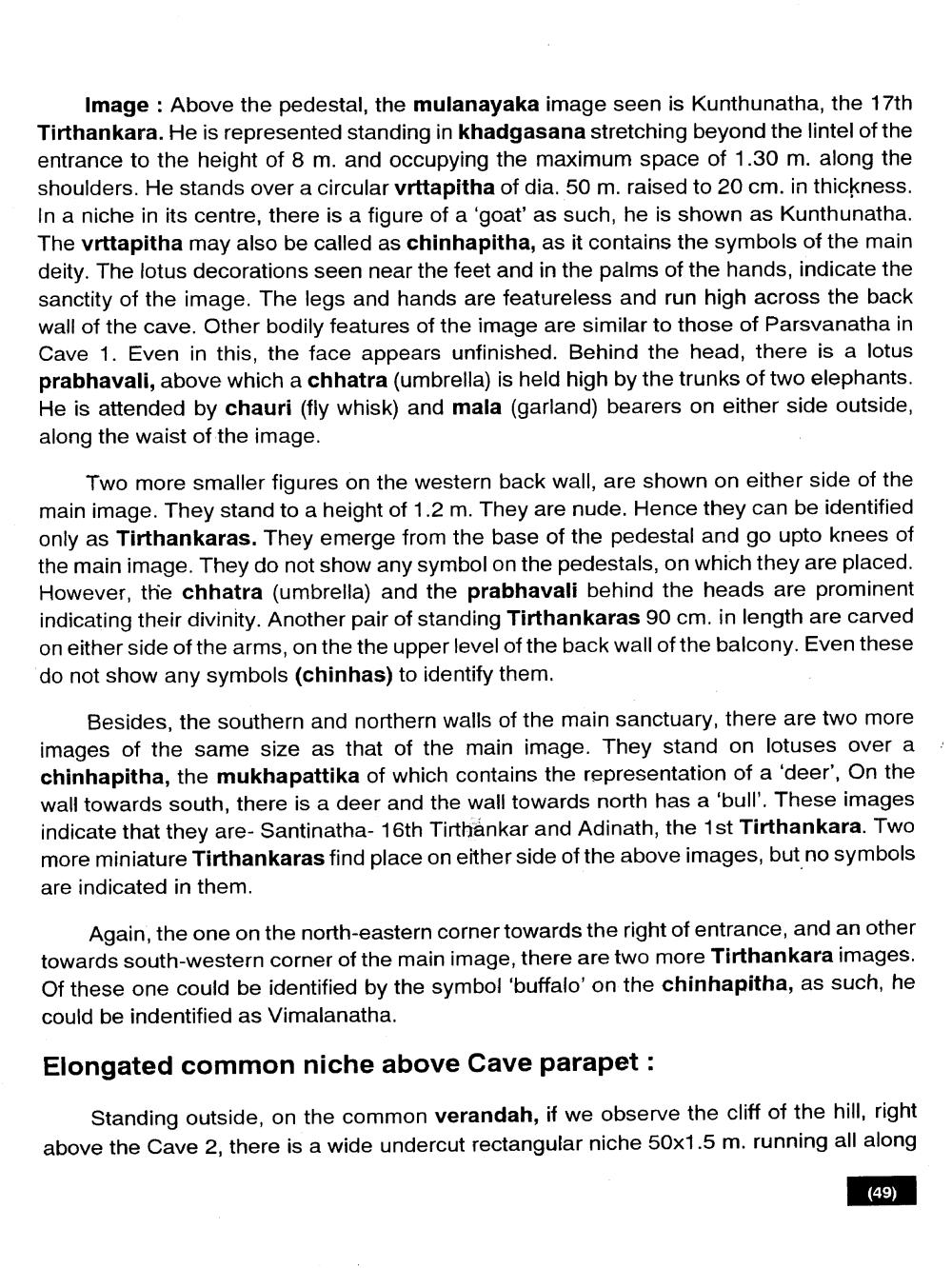________________
Image: Above the pedestal, the mulanayaka image seen is Kunthunatha, the 17th Tirthankara. He is represented standing in khadgasana stretching beyond the lintel of the entrance to the height of 8 m. and occupying the maximum space of 1.30 m. along the shoulders. He stands over a circular vrttapitha of dia. 50 m. raised to 20 cm. in thickness. In a niche in its centre, there is a figure of a 'goat' as such, he is shown as Kunthunatha. The vrttapitha may also be called as chinhapitha, as it contains the symbols of the main deity. The lotus decorations seen near the feet and in the palms of the hands, indicate the sanctity of the image. The legs and hands are featureless and run high across the back wall of the cave. Other bodily features of the image are similar to those of Parsvanatha in Cave 1. Even in this, the face appears unfinished. Behind the head, there is a lotus prabhavali, above which a chhatra (umbrella) is held high by the trunks of two elephants. He is attended by chauri (fly whisk) and mala (garland) bearers on either side outside, along the waist of the image.
Two more smaller figures on the western back wall, are shown on either side of the main image. They stand to a height of 1.2 m. They are nude. Hence they can be identified only as Tirthankaras. They emerge from the base of the pedestal and go upto knees of the main image. They do not show any symbol on the pedestals, on which they are placed. However, the chhatra (umbrella) and the prabhavali behind the heads are prominent indicating their divinity. Another pair of standing Tirthankaras 90 cm. in length are carved on either side of the arms, on the the upper level of the back wall of the balcony. Even these do not show any symbols (chinhas) to identify them.
Besides, the southern and northern walls of the main sanctuary, there are two more images of the same size as that of the main image. They stand on lotuses over a chinhapitha, the mukhapattika of which contains the representation of a 'deer', On the wall towards south, there is a deer and the wall towards north has a 'bull'. These images. indicate that they are- Santinatha- 16th Tirthankar and Adinath, the 1st Tirthankara. Two more miniature Tirthankaras find place on either side of the above images, but no symbols are indicated in them.
Again, the one on the north-eastern corner towards the right of entrance, and an other towards south-western corner of the main image, there are two more Tirthankara images. Of these one could be identified by the symbol 'buffalo' on the chinhapitha, as such, he could be indentified as Vimalanatha.
Elongated common niche above Cave parapet:
Standing outside, on the common verandah, if we observe the cliff of the hill, right above the Cave 2, there is a wide undercut rectangular niche 50x1.5 m. running all along
(49)




